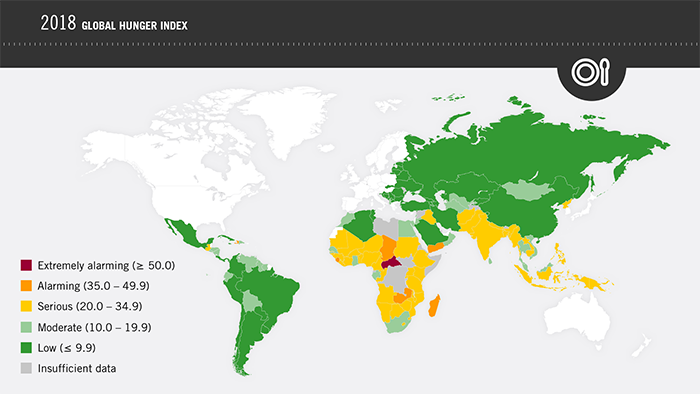- India ranked 103/119
- India slipped by 3 ranks i.e. from rank 100 in 2017
- Index is released by Washington-based International Food Policy Research Institute (IFPRI).
- At least one in five Indian children under the age of five are ‘wasted,’ which means they have extremely low weight for their height, reflecting acute under-nutrition.
- The only country with a higher prevalence of child wasting is the war-torn nation of South Sudan.
- India has shown improvement in three of the indicators over the comparable reference years. The percentage of undernourished people in the population has dropped from 18.2% in 2000 to 14.8% in 2018. The child mortality rate has halved from 9.2% to 4.3%, while child stunting has dropped from 54.2% to 38.4% over the same period.

What is Global Hunger Index (GHI)?
- The GHI is a multidimensional statistical tool used to describe the state of countries’ hunger situation.
- It is released annually by IFPRI since 2006.
- It ranks countries on a 100-point scale. Zero on the scale is the best score (no hunger), and 100 is the worst.
- It highlights successes and failures in hunger reduction and provides insights into the drivers of hunger. Thus, GHI aims to trigger actions to reduce hunger.
- The GHI is calculated by taking into account four indicator parameters. They are :
- Undernourished population (1/3rd weight),
- Child wasting (1/6th weight),
- Child stunting (1/6th weight) and
- Infant mortality rate (1/3rd weight).
- Stunting: Deficiency in height in relation to age, reflects chronic undernutrition.
- Wasting: Low weight in relation to a child’s height, reflects acute undernutrition.